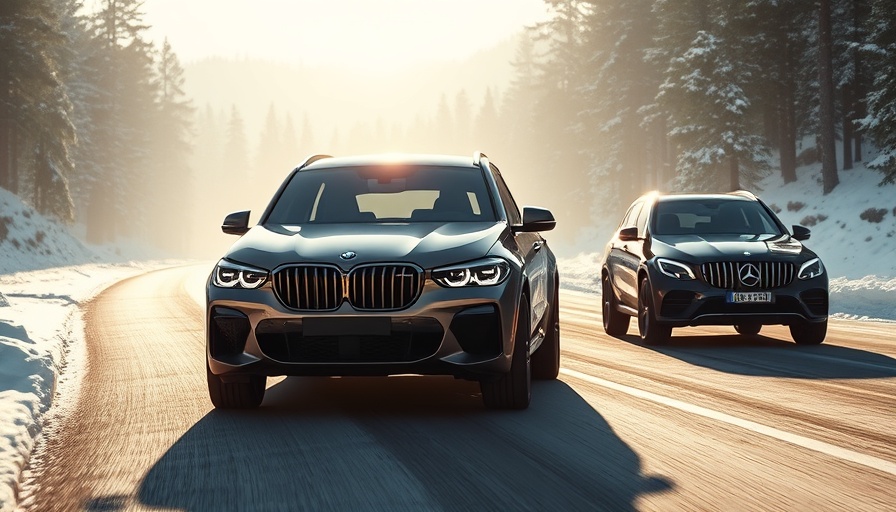
The Race Towards Electrification: An Overview
The upcoming world premieres of the Mercedes GLC EV and BMW Neue Klasse SUV at the Munich Motor Show represent a pivotal moment for the automotive industry as two powerhouses unveil their latest electric offerings. With the increasing demand for electric vehicles (EVs), these models are designed to cater to the shifting preferences of today’s car enthusiasts.
Dive into the Details: Comparing the New Electric Platforms
Both the Mercedes GLC EV and the BMW Neue Klasse SUV are built on advanced electric platforms that utilize 800V technology—MB.EA for Mercedes and a distinct architecture for BMW. However, beneath their sleek exteriors lie fundamental differences, particularly in the powertrains. The GLC EV is poised to utilize permanent magnet synchronous motors, incorporating a two-speed gearbox for enhanced performance, reminiscent of the Porsche Taycan. In contrast, BMW's innovative design is led by high-rev synchronous motors, which eliminate the need for a two-speed setup, promising remarkable efficiency and power.
Performance Metrics: What Can We Expect?
Pushing the envelope in performance, the Mercedes GLC EV will come with options designed to impress enthusiasts. The rear-axle engine is expected to output around 272 PS, with all-wheel drive variants reaching an impressive 489 PS. On the other hand, the BMW Neue Klasse SUV, currently cloaked in mystery concerning its combined output, promises a competitive edge with its unique motor configurations that include both synchronous and asynchronous technology. The specs we know suggest robust performance across the board, appealing to both everyday drivers and performance seekers alike.
Battery Technology: A Closer Look
When it comes to batteries, both models will utilize lithium-ion technology, showcasing advancements in energy efficiency and longevity. With innovations in silicon carbide inverters being a commonality, buyers can expect reduced energy losses and improved reliability, ultimately enhancing the driving experience.
The Electric Future Awaits
The rivalry between Mercedes and BMW extends far beyond styling and brand loyalty; it’s about securing a significant share in the growing EV market. As the launch timelines inch closer, car enthusiasts must stay informed about these groundbreaking vehicles, which not only represent the latest in automotive technology but also signal a broader transformation in the industry.
 Add Row
Add Row  Add
Add 




Write A Comment